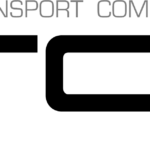Navigating the digital marketing landscape often means understanding two key strategies: Search Engine Optimization (SEO) and Search Engine Marketing (SEM). Both are essential tools to enhance online visibility, yet they function in distinct ways. This blog delves into when and how to use SEO and SEM to achieve the best results.
What is SEO?
SEO (Search Engine Optimization) focuses on improving your website’s organic rankings on search engines like Google. By optimizing for search engine algorithms, businesses can attract unpaid traffic.
Core Elements of SEO:
- On-Page SEO: Optimize meta tags, headings, and content for better search visibility.
- Content Creation: Develop valuable and relevant content for target audiences.
- Technical SEO: Ensure your site is crawlable and indexable by search engines.
- Link Building: Build quality backlinks to boost domain authority.
- User Experience (UX): Make navigation intuitive to improve user satisfaction.
Advantages of SEO
- Cost-efficient for long-term growth.
- Builds credibility with users who trust organic results.
- Offers sustainable traffic growth.
- Enhances overall website experience.
- Amplifies brand awareness over time.
When to Leverage SEO
- To establish long-term online visibility.
- For improving brand authority and trust.
- When targeting niche audiences with limited budgets.
- To complement other content-driven strategies.
What is SEM?
SEM (Search Engine Marketing) uses paid advertising to appear at the top of search results. This strategy leverages platforms like Google Ads to deliver targeted traffic instantly.
Core Elements of SEM:
- PPC Ads: Pay only for clicks on your ads.
- Display Ads: Use visually engaging ads on third-party websites.
- Remarketing: Re-engage visitors who previously interacted with your site.
- Ad Copy Optimization: Craft compelling, action-driven ad text.
- Landing Page Optimization: Ensure pages drive conversions effectively.
Benefits of SEM:
- Provides immediate visibility and traffic.
- Offers precise audience targeting by location, demographics, and behavior.
- Allows easy tracking and optimization of campaigns.
- Suitable for time-sensitive promotions.
- Flexible budget allocation for campaigns.
Best Times to Use SEM:
- During product launches or seasonal promotions.
- When entering highly competitive markets.
- To generate quick results or test new keywords.
See also: The Future of AI: How AI Is Changing the World
SEO vs. SEM: Key Differences
| Aspect | SEO | SEM |
| Time Frame | Long-term results that build over months. | Immediate visibility and quick traffic. |
| Cost Structure | Investment in content and optimization. | Pay-per-click or ad impressions. |
| Targeting Capabilities | Broader audience reach. | Precise targeting with advanced filters. |
| Sustainability | Results last even after effort ceases. | Results stop once ads are paused. |
| Credibility | Builds trust through organic rankings. | Users may perceive ads as less credible. |
How SEO and SEM Work Together
Combining SEO and SEM creates a powerful digital marketing strategy. Here’s how you can integrate them:
- Complement Strengths: Use SEM for quick wins while building a long-term presence with SEO.
- Data Insights: Use SEM metrics to refine SEO keyword strategies.
- Budget Optimization: Allocate resources based on immediate goals and long-term objectives.
- Seasonal Adjustments: Ramp up SEM during busy seasons while maintaining SEO growth.
- Consistent Branding: Align messaging across both paid and organic channels.
See also: How To Use AI For SEO To Improve Your Website
Conclusion
Choosing between SEO and SEM isn’t about picking one over the other. Both have distinct roles in a successful digital strategy. SEO builds a lasting foundation, while SEM delivers immediate results. When used together, they create a dynamic approach to boosting online visibility, attracting traffic, and achieving business goals.
To succeed, align your strategy with your objectives and regularly evaluate performance to refine your efforts. By leveraging both SEO and SEM effectively, your business can unlock its full potential in the digital space.


